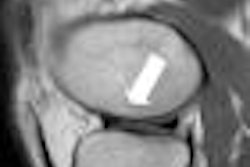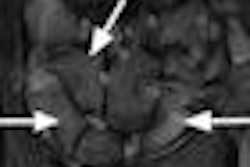Dear MRI Insider,
This issue of the MRI Insider features research that recommends cardiac MR angiography as the modality of choice in patients with Kawasaki disease to reduce the potential cumulative effect of radiation exposure from repeat CT angiography exams.
Kawasaki disease is an acute systemic vasculitis that generally affects children less than 3 years of age and can lead to the development of coronary artery disease and stenosis in as many as 25% of afflicted patients. The disease also can cause aneurysms in coronary arteries, which may rupture or lead to thrombosis and/or complete occlusion.
This informative study from the University of Rome "La Sapienza" also advocates the use of CT angiography only when physicians can't obtain diagnostic images from MR angiography. Read more about the research by clicking here.
Also in this edition are promising results from a novel PET/MRI prototype breast imaging system showing that the hybrid technology could produce images with enough clarity to more accurately classify lesions. Researchers at Stony Brook University in New York are working with the Brookhaven National Laboratory in Upton, NY, on the project. The ultimate goal is to combine MRI's high-resolution anatomic imaging capabilities with quantitative biochemical information from PET in one scanner.
In other news, researchers from New York have found that the diagnostic capabilities of a dedicated extremity 1-tesla MRI scanner are comparable to those of higher field strength magnets when imaging menisci, ligaments, and other knee disorders. The study from New York University and the Hospital for Joint Diseases-Orthopaedic Institute in New York City also found that extremity MRI exceeds the accuracy of conventional MRI sequences at higher fields for cartilage, and may prove a cost-effective alternative to whole-body knee imaging.
Last but not least, international editor Eric Barnes reports on the use of an automated postprocessing tool that eliminates the need for both a stress and rest exam in myocardial perfusion MRI. The German study also found that quantitative assessment of stress MRI images alone delivers the same diagnostic performance as semiquantitative evaluation of both stress and rest perfusion exams.
Whether you are working or on vacation this summer, it's easy to keep in touch with the latest MRI news and research developments through the MRI Digital Community.


.fFmgij6Hin.png?auto=compress%2Cformat&fit=crop&h=100&q=70&w=100)





.fFmgij6Hin.png?auto=compress%2Cformat&fit=crop&h=167&q=70&w=250)











